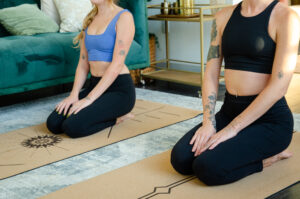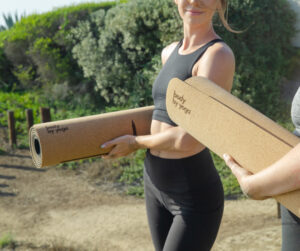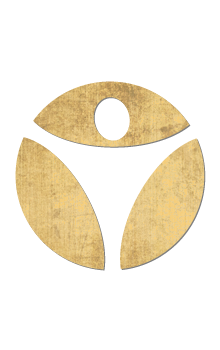Daily Stretches to Open Your Shoulders
- Updated on: April 2, 2021
you’re looking to gain muscle, begin or build upon your yoga practice, or simply
experience more ease in your body at the end of the day, working on your shoulder mobility
should be a top priority.
In today’s fast-paced society, stress-driven days can easily become the norm. But this lifestyle
can wreak havoc on our health. Many people hold a great deal of the tension in their shoulders
and neck, resulting in imbalances and pain throughout the body. Problematic habits like
prolonged periods of sitting, poor posture, and “hunching” your upper body to look at your phone
or computer make the problem worse.
By being proactive about your shoulder mobility, you can work towards healthy shoulders and a
more balanced, stress-resilient body. A few daily stretches can make a huge difference in
bringing some space and awareness to your shoulders.
Understanding Your Shoulders
The shoulders are your body’s most mobile joint. Actually, the shoulder girdle is composed of
two joints: the glenohumeral joint — a shallow ball-and-socket joint where the humerus (upper
arm bone) fits into the socket of the scapula (shoulder blade)— and the AC, or
acromioclavicular joint, a gliding joint connecting the scapula to the clavicle (collarbone). The
thoracic region of your spine and your rib cage also play important roles in your shoulder
complex.
And “complex” is a fitting term here. There’s a lot going on in your shoulders. These two joints
allow for the shoulder’s incredible range of motion. Just think about all of the directions your
arms can move in (better yet, put your arms up, move your arms around, and experience this
full range of motion. Experience the areas that feel “sticky” or stuck – you may already be
experiencing challenges to your mobility).
One look at a professional swimmer or professional acrobat in action and it’s easy to see the
potential for movement in the shoulders. But the more mobile a joint is, the less stable it is. In
fact, the shoulder girdle relies heavily on the surrounding muscles and ligaments for its stability.
And while the shoulder is the most commonly dislocated joint in the body (due to its instability),
the most common shoulder injuries are actually related to the soft tissue surrounding the joints
— think strains, tears, and inflammation.
These issues are often the result of a dysfunction somewhere in the complicated shoulder
girdle. Something is out of place — too tight, too weak, etc., and it creates misalignment, putting
extra tension or pressure somewhere else. When additional weight (muscle training) or
repetitive weight-bearing exercise create “wear and tear” on top of this misalignment, it’s a
recipe for injury and discomfort.
And in case you’re thinking you’re in the clear because you’re not working out or doing yoga,
think again. Sitting in an office all day, or even just scrolling on your phone for a good portion of
it, invites shoulder problems, too. Spending time with your head and shoulders in a forward
posture puts extra stress on the shoulder joints, and can throw your whole body out of balance.
And regardless of your activities, high levels of stress and anxiety can result in a “slouching” of
your shoulders as your rib cage reactively drops.
Improving Shoulder Health
So how does one keep their complicated shoulder complex happy and healthy? Like so many
other things in life, it’s a matter of balance. For your shoulders, balance requires both mobility
and stability. Daily shoulder stretches are a perfect place to start; in addition to potentially
increasing your flexibility, stretching can improve your circulation and overall stress level.
According to a report from the Wellness Council of America (WELCOA), “Frequent stretching
keeps a proper blood and nutrient supply to the working muscles and tissues throughout the
workday and prevents fatigue and discomfort and reduces the risk of MSD [musculoskeletal
disorders] injuries while reducing stress and increasing energy.”
Daily stretching can reduce your risk of injury, and keep your shoulders lubricated and liberated.
Imagine — rather than storing extra tension in your shoulders, you’ll be able to use the extra
ease and stability in your upper body to combat stress and stiffness.
Stretches for the Shoulders:
1. Standing Wall Stretch
Stand facing a wall. Step back 2 or 3 feet, or until you have to lean forward to touch the wall
(you’ll find your sweet spot in the pose). Feet should be hip distance and grounded, with the
core engaged- don’t let your belly or your hips go. Lean forward to place your hands (palms) flat
on the wall, shoulder height. Hands should be shoulder width, or wider if you’re feeling tight.
Keep your fingers spread and active as you take a few deep breaths, releasing your chest and
shoulders. Shoulder blades are set back; make sure you’re keeping your neck relaxed, and not
pressing into the wall or allowing your hands to go too high.
2. Goal Post Arms
Stand with your back to a wall. Chest is open and scapula are relaxed and neutral. Bring both
elbows out to 90 degrees, so elbows are making contact with the wall. Without moving your
elbows, turn the right arm up (back of the right hand touches the wall if it’s comfortable) and the
left arm down (left palm touches the wall if it’s comfortable). Slowly switch and repeat. Don’t
forget to breathe steadily and keep core engaged.
3. Shoulder Stretch with Strap
This is a great stretch option because it’s highly customizable and allows you to really feel
where you’re at with your shoulder mobility, day to day. If you don’t have a yoga strap — get
one! It’s a must-have tool for yoga and stretching. But for this exercise, a belt, scarf, or even
broom, will work.
Kneeling or standing, take grip of the strap, wider than your shoulders to start, and straighten
your arms in front of you (so the strap should be in a straight line in front of you). Keep your core
engaged, and your breathing regular and steady. Don’t lock your elbows as you bring the strap
slowly up. Stop and assess as the strap reaches over your head. You may want to back off the
movement now, or widen your grip as you continue bringing the strap behind you. It’s important
not to force the movement, or “skip” a sticky area. Stay mindful and gentle with yourself and
your shoulders.
4. Cow Face Pose (Gomukhasana) Arms
You can do this pose standing or kneeling. Whichever you choose, make sure you are
comfortable and grounded in your base pose, with your core engaged, your neck loose and free
(no tension there), and your breathing steady. No slouching in the chest. Yoga teacher B.K.S.
Iyengar wrote of slouching:
“The moment the body shrinks, the brain becomes heavy and dull, and you see nothing. The
doors of perception are closed. You should immediately lift the intelligence of the chest and
open the mind. The corners of the chest are pillars. They should always be firm. Slouching acts
like a narcotic to the body.”
So, you are alert and mindful as you begin, kneeling or standing, chest open. Have a small
towel ready to use next to you (or a strap). Holding one end of the towel in your right hand,
reach your right arm straight up, then bend the elbow and let the hand with the towel fall behind
your head. Move your left arm behind the back and bend the arm up, so that the back of your
left hand rests against the left should blade, if possible. Reach to grab the towel, and create a
little bit of tension by gently pulling on the towel in opposite directions. Take a few deep breaths,
opening your heart and shoulder space. Repeat on the other side.
5. Cat / Cow Stretches
Begin in table pose — on hands and knees, wrists under shoulders and knees under hips.
Hands are grounded on your mat, fingertips are active and pointing to the front of the mat. Shins
and knees are hip width apart; head is in a neutral position and there is no tension in the neck.
Low belly is engaged. Breathe deeply.
On an inhale, drop your belly towards the mat, coming into cow pose. Lift your chin and chest,
but keep your neck relaxed and remain mindful as not to overextend. Broaden your shoulder
blades, drawing shoulders away from ears.
Exhaling, move into cat pose — feel your belly draw into your spine as your mindfully round
your back to the ceiling. Release your head towards the floor, without forcing your chin to your
chest. There should be no forcing, and no tension in your neck. Come back to a neutral tabletop position, and repeat.
Recent Posts
Categories
Related Articles
Related Articles

Breathing technique to improve your yoga practice
Your yoga practice can be whatever you need it to be. Yoga can be for energy and focus for your day, injury rehabilitation and prevention,

Other ways to stay involved
One of our favorite things about yoga is the community that’s behind it. We have tons of ways to be involved in our yoga community

Dynamic vs Static Stretching
Stretching is necessary in order to loosen joints, engage muscle groups, prevent injuries and help your body relax, but did you know there’s more than
